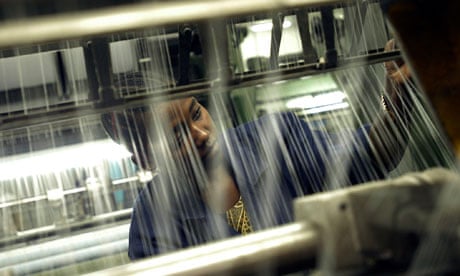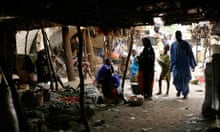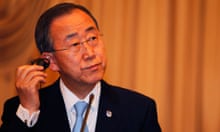African countries should emulate Asian models of regional development that encompass industrial policy and investment in infrastructure to boost trade among themselves, a UN report recommended on Thursday.
The UN Conference on Trade and Development (Unctad) pointed to the greater Mekong sub-region project in south-east Asia as a model of a strategic development programme that could bring dividends for Africa.
"The Mekong sub-region project was driven by the Asian Development Bank. What we found interesting was that it went beyond trade to include a common industrial policy, common investment policy and pulled up the poorest countries. We thought it was something African countries can learn from," said Taffere Tesfachew, an Unctad director.
Unctad calls the approach "developmental regionalism", which goes beyond co-operation on trade to take in investment, research and development as well as policies aimed at accelerating regional industry and infrastructure, such as building better networks of roads and railways.
Short-term opportunities for regional trade are to be found particularly in agriculture, the report said. Africa has about 27% of the world's arable land. Yet many African countries import food and agricultural products from outside the continent. From 2007 to 2011, 37 countries were net food importers and 22 were net importers of agricultural raw materials. Only about 17% of the continent's world trade in food and live animals took place within Africa.
But the greater long-term opportunity, and bigger challenge, is to improve industry to provide the goods for which regional trade typically increases demand, according to the report. Africa accounts for only 1% of global manufacturing. Unctad suggested that if national markets could be integrated, there should be enough customers to support the manufacture of cars, machines and electronic goods.
African countries have sought to exploit the benefits of regional trade since gaining independence in the 1960s. The most recent manifestation of this desire came at the African Union summit in Addis Ababa in January 2012, when leaders renewed a commitment to boost intra-African trade and fast track the establishment of a continental free-trade area.
Regional trade remains weak on the continent. From 2007 to 2011, the average share of intra-African exports was 11% of total exports, compared with 50% in Asia, 21% in Latin America and the Caribbean, and 70% in Europe. The low levels of regional trade are attributed to focusing more on eliminating trade barriers and less on developing productive capacities – particularly of the private sector – needed for trade.
"Success in boosting intra-African trade will depend largely on the extent to which countries are able to foster entrepreneurship and build supply capacity, establish a credible mechanism for dialogue between the state and business, build regional value chains, implement existing regional trade agreements, rethink their approach to regional integration, and maintain peace and security," said the report.
Given the weakness of the private sector in many African countries, public investment is needed to stimulate private-sector growth – not through ownership as in the 1970s, but through credit lines and development banks, Tesfachew said. That approach is being deployed by Ethiopia and Rwanda.
There are attempts to build regional trading blocs, and eight exist – which is part of the problem as different blocs have different rules. To complicate matters, some countries belong to more than one bloc.
The Southern African Development Community, which includes the continent's economic powerhouse, South Africa, is seen as the most advanced bloc. There are plans to bring together SADC, the East African Community, and the Common Market for Eastern and Southern Africa into one bloc, and some countries have introduced one-stop border crossings – such as at Chirundu on the Zambia-Zimbabwe border – to ease the passage of goods.
But provisions such as rules of origin have proved a barrier to integration. Designed to ensure that only members of a preferential trade arrangement benefit from tariff preferences, they can end up inhibiting trade. In garments, for example, both the fabric and the garment have to be manufactured in a SADC country. But with little textile manufacture in the region, the rules limit trade in garments.
Peace and stability are prerequisites for boosting intra-African trade. Conflict in Ivory Coast, for example, reduced trade within the West African Economic and Monetary Union by about 60% between 1999 to 2007, the report said.



